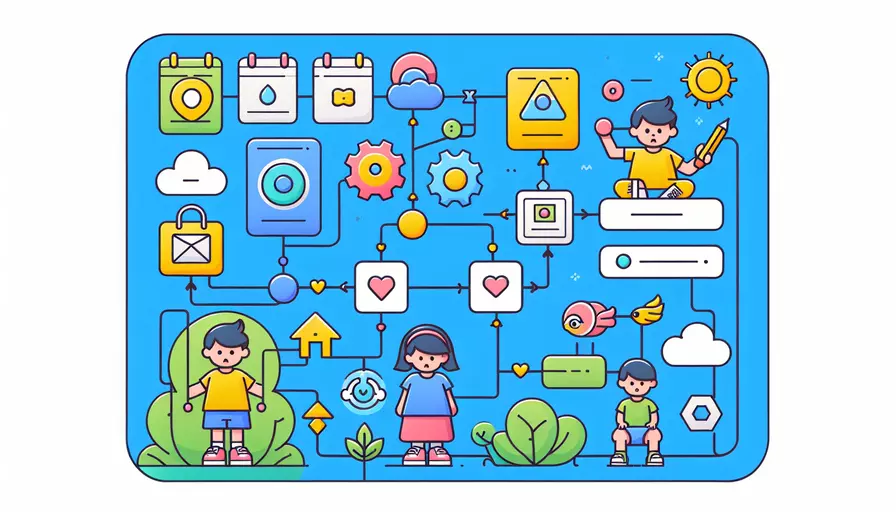
Vue中的子组件是指在一个父组件中被引用的另一个Vue组件。 它们通过父组件进行调用和管理,从而实现模块化开发和代码复用。子组件可以接收父组件传递的数据(即props),并通过事件向父组件传递数据。以下是详细的解释和说明。
一、什么是Vue组件
Vue组件是Vue.js框架中的基本构建块。每个组件基本上都是一个独立的、可复用的Vue实例,具备自己的模板、数据、方法和生命周期钩子。组件可以像HTML标签一样被使用,使得代码更加模块化和清晰。
- 模板:定义组件的HTML结构。
- 数据:组件内部的数据状态。
- 方法:定义组件的行为。
- 生命周期钩子:在组件的不同阶段触发的函数。
二、子组件的定义和使用
在Vue中,子组件是指在父组件中嵌套的另一个组件。以下是定义和使用子组件的步骤:
- 定义子组件:
// 子组件文件(ChildComponent.vue)<template>
<div>
<h2>{{ message }}</h2>
</div>
</template>
<script>
export default {
name: 'ChildComponent',
props: ['message']
}
</script>
- 在父组件中引用子组件:
// 父组件文件(ParentComponent.vue)<template>
<div>
<child-component :message="parentMessage"></child-component>
</div>
</template>
<script>
import ChildComponent from './ChildComponent.vue';
export default {
name: 'ParentComponent',
components: {
ChildComponent
},
data() {
return {
parentMessage: 'Hello from Parent Component'
}
}
}
</script>
三、子组件的通信方式
子组件和父组件之间的通信是通过props和事件来实现的:
-
父组件向子组件传递数据(props):
- 父组件通过在子组件标签上使用属性绑定(:)的方式传递数据。
- 子组件通过props接收父组件传递的数据。
// 父组件<child-component :message="parentMessage"></child-component>
// 子组件
props: ['message']
-
子组件向父组件传递数据(事件):
- 子组件通过$emit方法触发事件。
- 父组件在子组件标签上监听事件,并接收数据。
// 子组件<button @click="sendData">Send Data</button>
methods: {
sendData() {
this.$emit('data-from-child', 'Data from Child Component');
}
}
// 父组件
<child-component @data-from-child="handleData"></child-component>
methods: {
handleData(data) {
console.log(data); // 'Data from Child Component'
}
}
四、子组件的生命周期钩子
子组件和父组件有各自的生命周期钩子,这些钩子函数在组件的不同阶段触发:
-
父组件生命周期钩子:
- beforeCreate
- created
- beforeMount
- mounted
- beforeUpdate
- updated
- beforeDestroy
- destroyed
-
子组件生命周期钩子:
- beforeCreate
- created
- beforeMount
- mounted
- beforeUpdate
- updated
- beforeDestroy
- destroyed
生命周期钩子的触发顺序如下:
- 父组件的beforeCreate
- 父组件的created
- 父组件的beforeMount
- 子组件的beforeCreate
- 子组件的created
- 子组件的beforeMount
- 子组件的mounted
- 父组件的mounted
五、子组件的作用域插槽
作用域插槽是一种特殊的插槽,可以让父组件插入的内容访问子组件的数据。定义方式如下:
-
定义子组件的作用域插槽:
// 子组件<template>
<div>
<slot :user="user"></slot>
</div>
</template>
<script>
export default {
data() {
return {
user: { name: 'John Doe' }
}
}
}
</script>
-
使用作用域插槽的父组件:
// 父组件<child-component>
<template v-slot:default="slotProps">
<p>{{ slotProps.user.name }}</p>
</template>
</child-component>
六、子组件的动态组件
动态组件是指根据条件动态渲染不同的子组件。通过Vue的
-
定义多个子组件:
// ChildOne.vue<template>
<div>Child One</div>
</template>
// ChildTwo.vue
<template>
<div>Child Two</div>
</template>
-
在父组件中使用动态组件:
<template><div>
<component :is="currentComponent"></component>
<button @click="toggleComponent">Toggle Component</button>
</div>
</template>
<script>
import ChildOne from './ChildOne.vue';
import ChildTwo from './ChildTwo.vue';
export default {
data() {
return {
currentComponent: 'ChildOne'
}
},
components: {
ChildOne,
ChildTwo
},
methods: {
toggleComponent() {
this.currentComponent = this.currentComponent === 'ChildOne' ? 'ChildTwo' : 'ChildOne';
}
}
}
</script>
总结
Vue中的子组件在提高代码模块化和复用性方面扮演着重要角色。通过props和事件,父组件和子组件可以实现数据的双向传递。理解和掌握子组件的使用方法,不仅可以使代码结构更加清晰,还能大大提升开发效率。建议在实际项目中多加练习,熟练掌握子组件的通信和生命周期钩子的使用。
相关问答FAQs:
什么是Vue子组件?
在Vue中,子组件是指在父组件中声明和使用的组件。子组件通常用于封装特定的功能或视图,并可以在父组件中重复使用。通过使用子组件,我们可以将应用程序的不同部分模块化,使代码更加可维护和可复用。
如何创建Vue子组件?
要创建一个Vue子组件,首先需要在父组件的模板中声明子组件的标签。这可以通过在HTML模板中使用自定义标签的形式来实现。然后,在Vue的组件选项中,使用components属性将子组件与父组件关联起来。这样,Vue就能够在父组件中正确地渲染和使用子组件。
子组件与父组件之间如何进行通信?
子组件与父组件之间的通信可以通过props和events来实现。通过props,父组件可以将数据传递给子组件,并且子组件可以在自己的模板中使用这些数据。而通过events,子组件可以向父组件发送消息,以便父组件可以在接收到消息时执行相应的操作。
需要注意的是,props是单向数据流,即数据只能从父组件流向子组件。如果需要在子组件中修改父组件的数据,可以通过在子组件中触发事件来实现。父组件可以在接收到事件后更新自己的数据。
总而言之,Vue的子组件是一种非常有用的方式,可以将应用程序的不同功能模块化,使代码更加可维护和可复用。通过合理使用props和events,可以实现子组件与父组件之间的数据传递和通信。
文章标题:Vue什么是子组件,发布者:worktile,转载请注明出处:https://worktile.com/kb/p/3518162

 微信扫一扫
微信扫一扫  支付宝扫一扫
支付宝扫一扫 